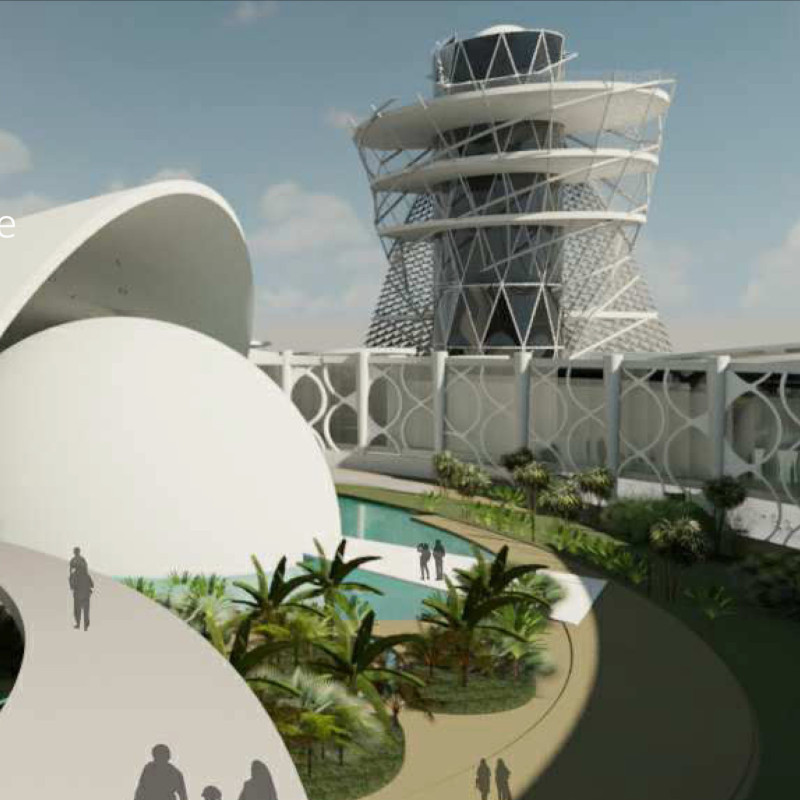5 key facts about this project
At the heart of the design is the concept of connectivity—both physical and visual. The architectural layout promotes an open flow of movement, with strategically placed pathways that facilitate easy navigation through the various designated areas, including gathering spaces, meeting rooms, and leisure zones. This design approach encourages collaboration and interaction, making the facility an inviting hub for community engagement.
Materiality plays a vital role in the overall design, with a focus on sustainable and locally sourced materials that resonate with the surrounding environment. The primary materials utilized in this project include reclaimed wood, which adds warmth and texture to the interiors, and high-performance glass that allows natural light to penetrate deep into the spaces, reducing reliance on artificial lighting during the day. Moreover, the inclusion of concrete not only serves a structural purpose but also contributes to the building's thermal mass, enhancing its energy efficiency.
The building's façade is notable for its layered appearance, which combines different materials to create visual interest while simultaneously serving practical functions such as weather resistance and insulation. The thoughtful integration of green elements, including vertical gardens and rooftop terraces, further enhances the aesthetic appeal and promotes biodiversity within the urban landscape. These unique design features invite nature into the built environment, offering occupants a sense of tranquility and a connection to the outdoors.
Attention to detail is evident throughout the project, particularly in the selection of finishes and the arrangement of spaces. The interiors are designed to be flexible, with movable partitions that allow for adaptability in response to varying needs. This approach not only maximizes the usability of the spaces but also echoes contemporary architectural practices focused on creating dynamic environments.
The inclusion of innovative technologies within the project underscores a commitment to sustainability. Features such as rainwater harvesting systems and photovoltaic panels are integrated into the design to minimize the building's ecological footprint. This forward-thinking approach aligns with modern architectural trends that prioritize environmental responsibility and showcase the potential for buildings to generate their own energy.
Unique design approaches are evident in the project through the exploration of light and shadow, creating a dynamic interplay of these elements that enhances the user experience. Skylights and strategically placed windows not only illuminate the interior spaces but also provide framed views of the surrounding landscape, enriching the overall perception of the building.
In summary, this architectural project stands out for its emphasis on creating a space that is both functional and socially enriching. By prioritizing materiality, sustainability, and thoughtful design, it succeeds in offering a multifunctional environment that adapts to the needs of its users while respecting its surroundings. The integration of contemporary architectural ideas results in a facility that not only serves its primary functions effectively but also enhances the urban fabric of the area.
For those interested in a deeper exploration of this architectural endeavor, I encourage a review of the architectural plans, sections, designs, and ideas that illustrate the comprehensive thought process behind the project. Engaging with these elements will provide further insights into the design philosophy and the innovative solutions this project embodies.


 Stéphan G. Hoornaert
Stéphan G. Hoornaert 




















